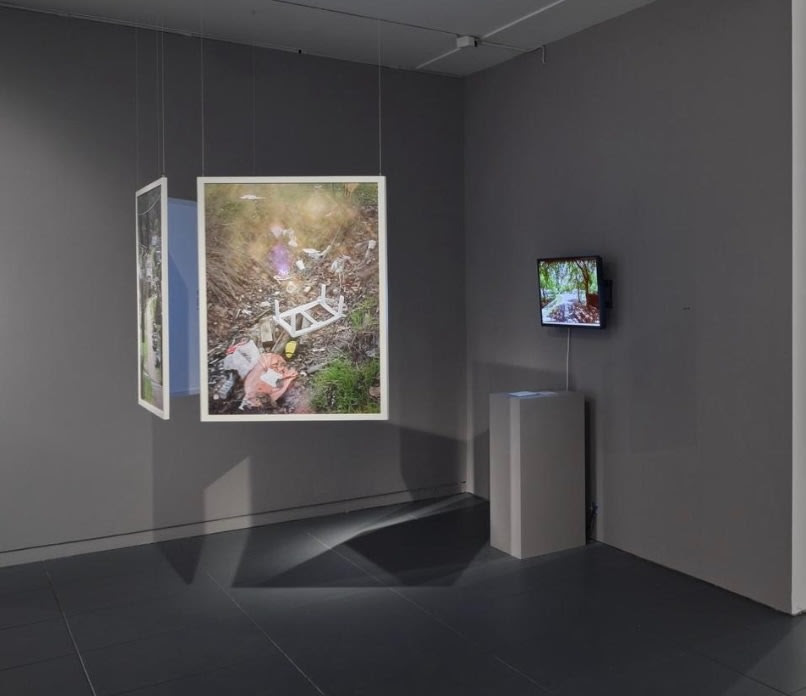We are thrilled and honored to announce that Sean Fader's Insufficient Memory has been acquired by the Brooklyn Museum. The work was recently exhibited in The Brooklyn Artists Exhibition, after he was invited to participate by Mickalene Thomas.
In 2018, Fader began combing through historical archives to compile a database of LGBTQ+ people who were murdered in hate crimes in the United States from 1999 to 2000, while the Matthew Shepard and James Byrd Jr. Hate Crimes Prevention Act was being debated in Congress. (The bill, which expanded the 1969 hate crimes law to include violence based on the victim’s gender, gender identity, or disability, was not passed and signed into law until 2009.) The artist drove roughly 25,000 miles to 38 states to photograph the scene of each of these murders, sometimes even putting himself in potentially dangerous situations. He specifically used an old Sony Digital Mavica camera that itself dates to 1998, just before the murders he documented began, and which he serendipitously found in a supply closet at the university where he was teaching at the time. Shot two decades after the murders, these photos show only nondescript rural and suburban locations. Their ordinariness speaks to the ordinariness of violence against the queer community, as well as the paradox of visibility: leaving the closet to proudly proclaim your identity can make you vulnerable to other forms of oppression, including surveillance and even violence. As the artist noted in a video interview, “I hope that people look at this work and they realize how many people we’ve lost in the fight for queer equity, and that visibility for queer people is complicated: visibility is part of equity, but it’s also something that can still get you killed. So we have to continue to fight every day.”
Upon the completion of the photographic documentation, he uploaded each image to a custom Google Earth database, along with short texts describing each murder and his experience of photographing its site. The result is an interactive map that functions as a digital archive and memorial to LGBTQ+ lives. The printed photos that accompany each installation are all vertical, suggesting tombstones or memorial markers.
Fader built his list in part by using old issues of queer publications, many of which have never been digitized and are therefore hard to find. Just as their murders were not yet legally recognized as hate crimes, outside of these publications the victims were often not even recognized as being queer; for example, many of the trans individuals had their identities suppressed by mainstream news outlets. By using a digital camera from 1998 — just before the online sharing of photos on social media began to increase the visibility of queer communities – and just as those communities began to see themselves reflected in popular culture through shows like Ellen — Fader highlights the tension between erasure and representation that he himself observed as a queer man coming of age in the 1990s. In speaking with curator Tina Rivers Ryan, he noted, “I had heard the names of people like Matthew Shepherd — but why hadn’t I heard of any of these other names?”
About the Artist:
Sean Fader is currently an Assistant Professor at NYU’s Tisch School of the Arts in the Department of Photography and Imaging. Fader received his MFA from the School of the Art Institute of Chicago, his MA from the Maryland Institute College of Art in Baltimore, and his BFA from the New School in New York City.
